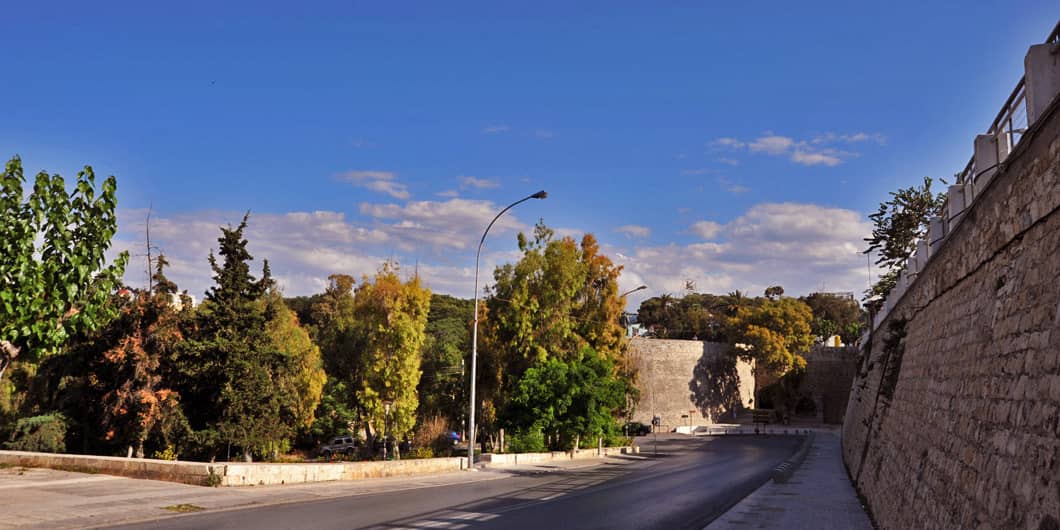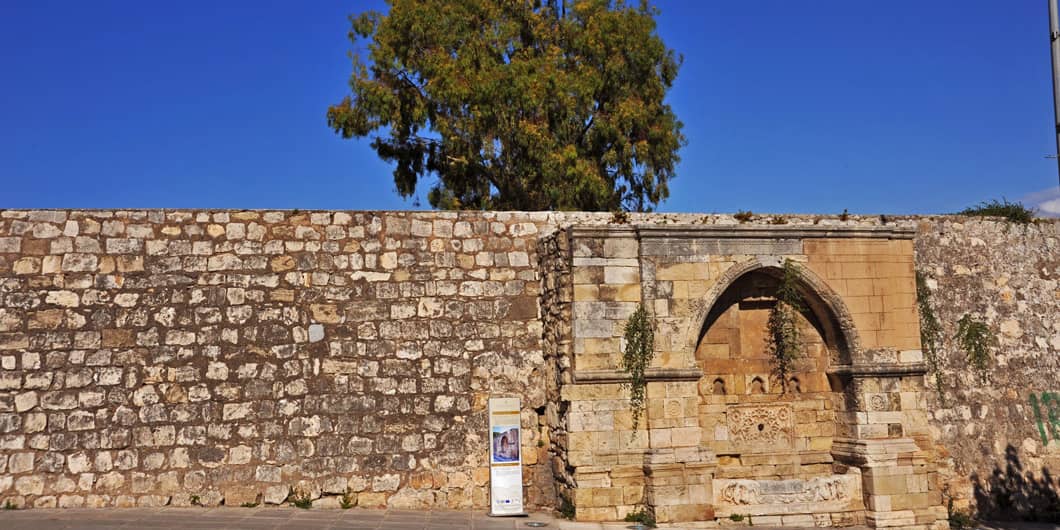
16°C
Heraklion had been fortified already in the years of the First Byzantine period (330-840 AD). These fortifications were supplemented by the Arabs (840-961), the Byzantines (961-1204), and the Venetians, after 1211.
Indeed, the looming Turkish threat compelled the Venetians to reinforce the defence of the capital city of Regno di Candia(Kingdom of Crete), using the latest technologies of the time. The fortifications that can be seen today were based on the designs made by the Venetian architect Michele Sanmicheli, and they were built somewhere between 1462 and 1560.

The main wall was three kilometres long, and had four gates and seven bastions. It was surrounded by a large moat which had additional bastions on the outside that do not survive today.
The fortification works of Heraklion are rightfully counted among the most important in the Eastern Mediterranean, regarding their size, aesthetics and their functional superiority.
The Venetian city walls had four main gates, located at the four compass points.
The Harbour Gate (Pili tou Molou) stood to the north, at the far end of 25 August Street, and led to the harbour of the port. The Pantocrator Gate is situated to the west, next to where the impressive Chania Gate (Chanioporta), was built in later years. The Saint George Gate (Pili Agiou Georgiou) can be seen to the east, by the central square of Heraklion (Eleftherias square). The Jesus Gate (Pili tou Iisou), also known as the New Gate (Kainourgia Porta), is to be found to the south.

In addition to these four main entrance points, another three gates were built, to felicitate the movement of people and goods between the city and the port.
One of them was the Saint Andrew Gate (Pili Agiou Andrea), to the west, which was named after a bastion with the same name that proved to be the weakest point in the walls; it was through this point that the Turks invaded the city in 1669.
The second gate to be found eastwards was named Sand Gate (Pili tis Ammoudias), also known as Sabbionara, because it led to the beach east of the city. The third one, to the north, is the Dermatas Gate (Pili tou Dermata), located west of the Historical Museum.
Fortifications
Open-Well maintained
Venetian Period
Heraklion city
For the Rural Greece accessibility is fundamental to enhancing an inclusive tourism experience. Following the principles of inclusion and equality, the epaithros Rural Tourism Network and its member businesses are constantly working to enhance the tourism services provided, ensuring that all visitors have the opportunity to experience the authentic beauty of the Greek countryside.
Sustainability in tourism refers to a way of developing tourism that respects and protects the environment while strengthening the local economy and preserving cultural traditions. The aim of sustainable tourism is to provide unique and authentic experiences for visitors without harming the natural and social environment, while ensuring that local communities benefit from tourism activity.
This type of tourism is based on three pillars:
With sustainable tourism, visitors can have authentic experiences, knowing that the impact of tourism on the region is positive and lasting for future generations.
For Rural Greece, localism is one of the most important factors for the development of sustainable tourism, as it promotes a strong link between the tourism product and the local society, economy and culture. Through localism, visitors get the opportunity to explore authentic elements of the destination, such as local products, traditions and culture. This not only boosts the local economy, but also helps to sustain and strengthen local businesses, creating new jobs and supporting the development of local communities.
Furthermore, localism contributes to the sustainability of the tourism sector, as it reduces the use of resources from other regions and encourages the use of local goods and services, reducing the ecological footprint of tourism activities. Thus, integrating localism into tourism practices enhances sustainability awareness, both among visitors and local businesses, creating a more responsible and sustainable tourism destination.